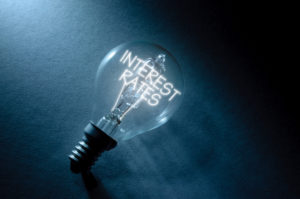
First of all let’s consider the mechanics of an interest rate. The classical definition is the percentage of principal charged by the lender for the use of its money. Alternatively, it represents the value premium that the borrower pays to the lender. The roles are reversed for deposit rates but the same fundamental expectations apply. Depositors assume positive returns.
At its meeting on 25 July the European Central Bank signalled its intention to lower interest rates below 0%. Is this nonsensical or have the basic laws of finance changed? Following the principles outlined above, interest rates are always meant to be positive. Otherwise we have the balderdash of borrowers getting loans for nothing and depositors receiving negative returns. [Jyske Bank, Denmark’s third largest bank, is currently offering ten-year mortgages at a fixed rate of minus 0.5%.] Has the world gone mad?
Physicists love these types of quandaries. When previously-held tenets are blown away by new developments a fresh theory emerges. Not to be outdone the financial markets (or more correctly the state-controlled Central Banks) have come up with a new theory espousing negative interest rates. And why wouldn’t they? Under the new regime Government debt becomes profitable!! Indeed any institution or business can now reduce their debt burden at the expense of others. As more and more parties see the advantages of getting paid to borrow money we can expect that the demand for credit will explode. Logically, the banks would then have to resort to credit selectivity – arbitrarily deciding who gets a loan; for how much and for how long. This has the obvious potential for turning into the next banking scandal.
Where depositors and pensioners receive a negative return they will be forced to invest in other assets. This should drive asset prices higher (shares, property, land, etc.) – but there’s a catch. This type of bubble inflation inevitably produces a bust with the lucky ones exiting out early but the rest (mostly retail consumers) getting badly burned. The more Central Banks push interest rates lower the more likelihood there is that all prices will come crashing down.
Maybe sanity can prevail. Maybe the logic of negative interest rates will be revealed to the masses – consumers have not yet woken up to the horror of negative rates – retail depositors stare at a paltry interest figure on their statements but, for now at least, their return is positive – while retail borrowers still see familiar rates of 3-4% for their mortgages. Retail banks, using traditional models, will simply not survive if there is a shift lower in interest rates. Their sources of funding (deposits) will disappear and only a select few banks will be financed by the markets.
Trialling negative interest rates is a dangerous experiment in consumer psychology. Never before in human history have the laws of expectation been so skewed. The idea of lending money to governments for 30-50 years for guaranteed negative returns smacks of old-time subservience. Surely history teaches us better!

